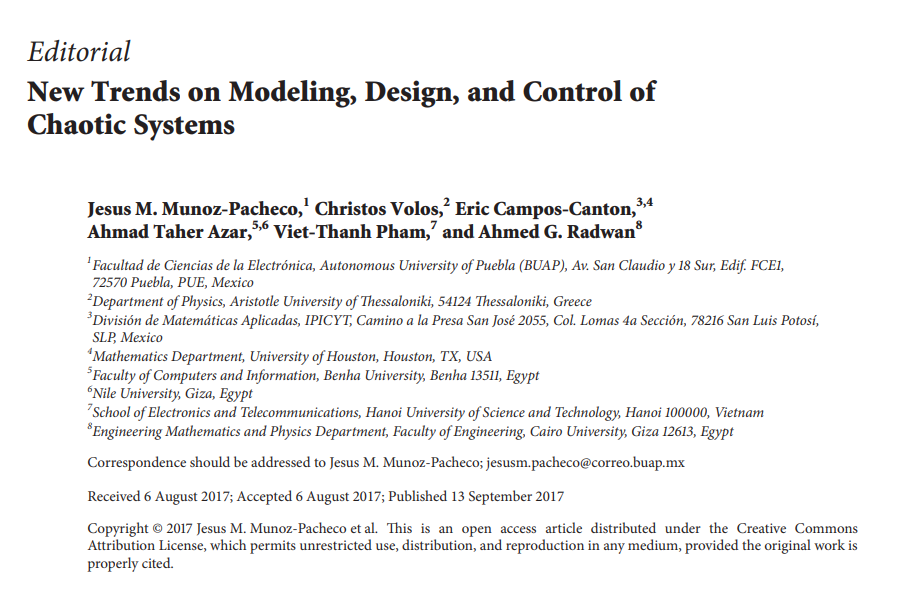
New Trends on Modeling, Design, and Control of Chaotic Systems
[No abstract available]
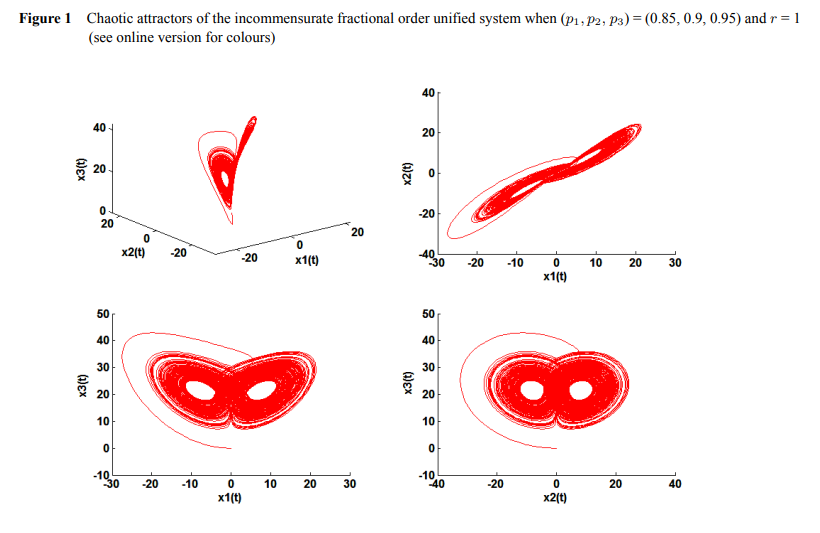
A new fractional hybrid chaos synchronisation
Over the last decades, synchronisation of chaotic systems has become an active research area and has been extensively and intensively studied due to the variety of important applications. Different types of chaos synchronisation have been presented, and many various methods and techniques for chaos synchronisation have been reported to investigate some types of chaos. In this paper, by combining full state hybrid projective synchronisation (FSHPS) and inverse full state hybrid projective synchronisation (IFSHPS), a new type of hybrid synchronisation between different dimensional incommensurate
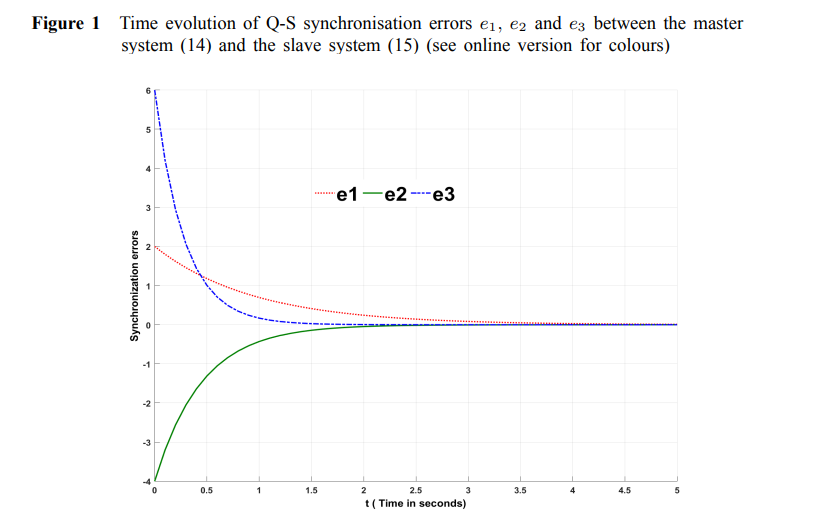
On a simple approach for Q-S synchronisation of chaotic dynamical systems in continuous-time
In this paper, the problem of Q-S synchronisation for arbitrary dimensional chaotic dynamical systems in continuous-time is investigated. Based on nonlinear control method, we would like to present a constructive scheme to study the Q-S synchronisation between n-dimensional master chaotic system and m-dimensional slave chaotic system in arbitrary dimension. The new derived synchronisation result is proved using Lyapunov stability theory. In order to verify the effectiveness of the proposed method, our approach is applied to some typical chaotic systems and numerical simulations are given to
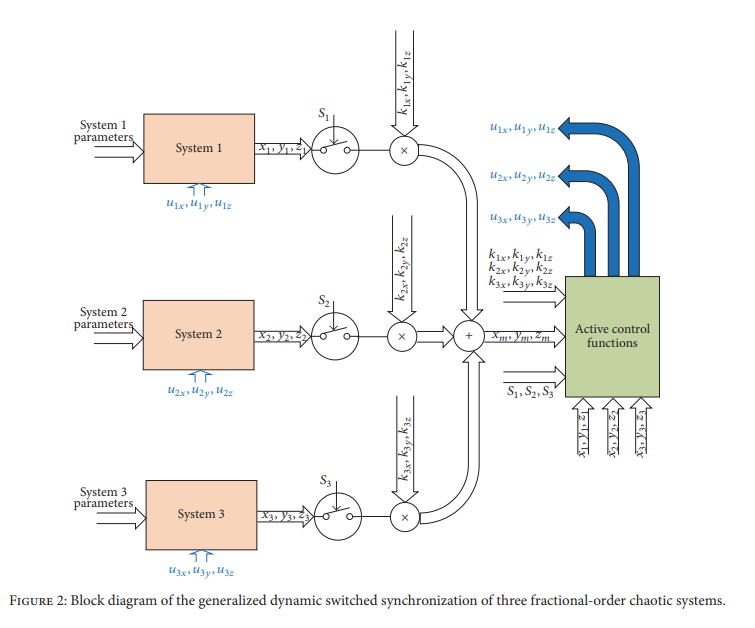
Generalized dynamic switched synchronization between combinations of fractional-order chaotic systems
This paper proposes a novel generalized switched synchronization scheme among n fractional-order chaotic systems with various operatingmodes. Digital dynamic switches and dynamic scaling factors are employed, which offermany new capabilities. Dynamic switches determine the role of each system as a master or a slave. A system can either have a fixed role throughout the simulation time (static switching) or switch its role one or more times (dynamic switching). Dynamic scaling factors are used for each state variable of the master system. Such scaling factors control whether the master is a
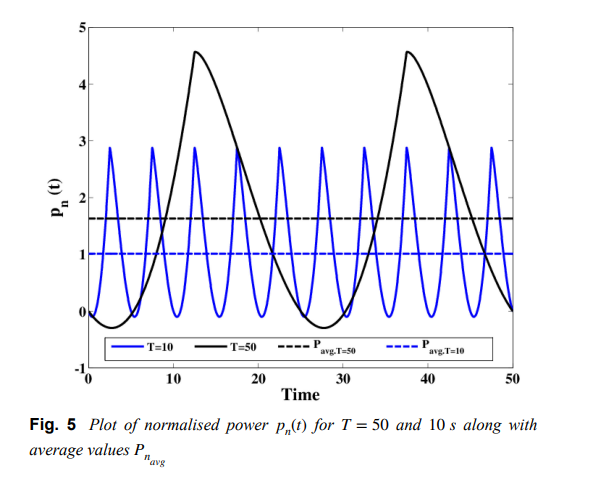
Low-voltage commercial super-capacitor response to periodic linear-with-time current excitation: A case study
The response of a commercial super-capacitor to an applied periodic current excitation in the form of a triangular waveform is investigated in this study. This waveform has a linear-with-time variation which enables linear charging and discharging of the device. A model consisting of a linear resistance Rs and a constant phase element is used to describe the super-capacitor impedance and expressions for the voltage across the device, the power, and stored energy are derived using concepts from fractional calculus. Experimental results are shown and an application of the study to super
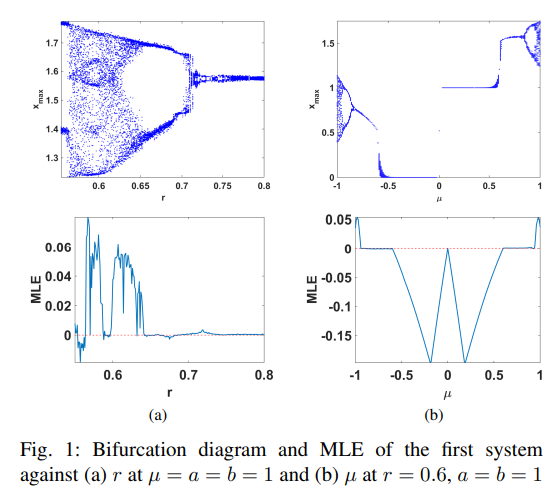
Chaotic systems based on jerk equation and discrete maps with scaling parameters
In the recent decades, applications of chaotic systems have flourished in various fields. Hence, there is an increasing demand on generalized, modified and novel chaotic systems. In this paper, we combine the general equation of jerk-based chaotic systems with simple scaled discrete chaotic maps. Numerical simulations of the properties of two systems, each with four control parameters, are presented. The parameters show interesting behaviors and dependencies among them. In addition, they exhibit controlling capabilities of the ranges of system responses, hence the size of the attractor diagram
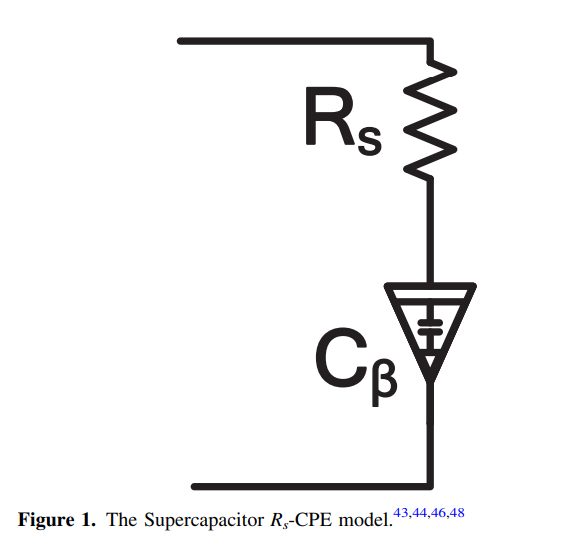
Optimal Charging and Discharging of Supercapacitors
In this paper, we discuss the optimal charging and discharging of supercapacitors to maximize the delivered energy by deploying the fractional and multivariate calculus of variations. We prove mathematically that the constant current is the optimal charging and discharging method under R s -CPE model of supercapacitors. The charging and round-trip efficiencies have been mathematically analyzed for constant current charging and discharging. © 2020 The Electrochemical Society ("ECS"). Published on behalf of ECS by IOP Publishing Limited.
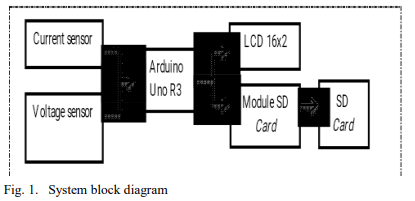
Design and analysis of DC electrical voltage-current data logger device implemented on wind turbine control system
DC electrical voltage-current measuring instrument and data are an instrument used to measure the current and voltage generated by wind turbines and record the measurement results. The function of this instrument is to activate the dummy load on the wind turbine control system to reduce the voltage that exceeds the safe limit when saving electrical energy. The research aimed to manufacture and analyze DC electrical voltage - current measuring instrument using the Arduino Uno based data logger, capable of measuring the DC and voltage generated by Hybrid Power Plants (PLTH) and use the metrology

Generalized Formula for Generating N-Scroll Chaotic Attractors
The generation of Multi-scroll chaotic attractors and chaos theory has gained much attention due to its many usages in a wide range of applications such as image-encryption and random number generators. There have been many previous attempts to establish a system that is able to generate large numbers of n - scroll chaotic attractors by modifying existing systems such as Lorenz and Chua's systems. In this paper, a proposed system based on generalizing Chua's system that has shown its ability to produce an unprecedentedly large number of even and odd chaotic scrolls is introduced. MATLAB
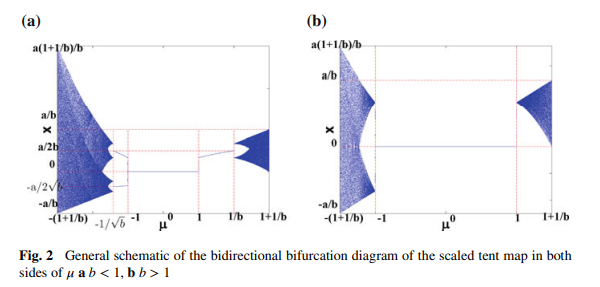
Chaos and bifurcation in controllable jerk-based self-excited attractors
In the recent decades, utilization of chaotic systems has flourished in various engineering applications. Hence, there is an increasing demand on generalized, modified and novel chaotic systems. This chapter combines the general equation of jerk-based chaotic systems with simple scaled discrete chaotic maps. Two continuous chaotic systems based on jerk-equation and discrete maps with scaling parameters are presented. The first system employs the scaled tent map, while the other employs the scaled logistic map. The effects of different parameters on the type of the response of each system are
Pagination
- Previous page ‹‹
- Page 11
- Next page ››
